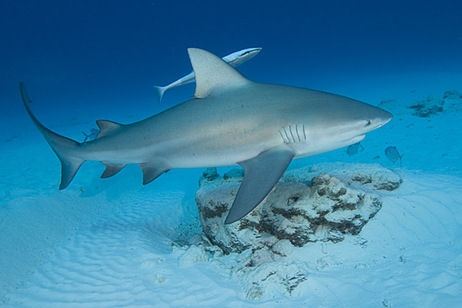Post by dinosauria101 on Oct 23, 2019 20:29:28 GMT 5
Spectacled Caiman (float of 4) - Caiman crocodilus
The spectacled caiman (Caiman crocodilus), also known as the white caiman or common caiman, is a crocodilian reptile found in much of Central and South America. It lives in a range of lowland wetland and riverine habitat types and can tolerate salt water as well as fresh; due in part to this adaptability it is the most common of all crocodilian species. Males of the species are generally 2 to 2.5 metres (6.6 to 8.2 ft), while females are smaller, usually around 1.4 metres (4.6 ft). The Spectacled caiman is a small to mid-sized crocodilian. Males of the species are generally 1.8 to 2 m (5.9 to 6.6 ft), while females are smaller, usually around 1.2–1.4 m (3.9–4.6 ft). The body mass of most adult Spectacled caimans is between 7 and 40 kg (15 and 88 lb). The maximum reported size for the species is 2.5 m (8.2 ft), with a body mass of 58 kg (130 lb). The largest female was reportedly 1.61 m (5.3 ft) long and weighed 20 kg (44 lb). Caimans from the Venezuelan llanos are reportedly larger-bodied than specimens from Mexico.

lh6.ggpht.com/-FZn8TxOd7qg/TkVGxPWPbDI/AAAAAAAAAAA/bHbVnTZOaJs/s1600/Spectacled+Caiman.jpg
Bull Shark - Carcharhinus leucas
The bull shark, Carcharhinus leucas, also known as Zambezi shark or unofficially known as Zambi in Africa and Nicaragua shark in Nicaragua, is a shark common worldwide in warm, shallow waters along coasts and in rivers. The bull shark is well known for its unpredictable, often aggressive behavior. The Bull shark can thrive in both saltwater and freshwater and can travel far up rivers. They have even been known to travel as far up as Indiana in the Ohio River and Illinois in the Mississippi River, although there have been few recorded attacks. They are probably responsible for the majority of near-shore shark attacks, including many attacks attributed to other species. However, bull sharks are not true freshwater sharks (unlike the river sharks of the genus Glyphis). The name bull shark comes from the shark's stocky shapes, broad, flat snout and aggressive, unpredictable behavior. In India, the bull shark may be confused with the Sundarbans or Ganges shark. In Africa it is also commonly called the Zambezi River shark or just Zambi. Its wide range and diverse habitats result in many other local names, including Ganges River Shark, Fitzroy Creek Whaler, van Rooyen’s Shark, Lake Nicaragua Shark, river shark, freshwater whaler, estuary whaler, Swan River Whaler, cub shark, and shovelnose shark. Bull sharks are large and stout, with females being larger than males. Bull sharks are large and stout, with females being larger than males. The bull shark can be up to 81 cm (2.66 ft) in length at birth. Adult female bull sharks average 2.4 m (7.9 ft) long and typically weigh 130 kg (290 lb), whereas the slightly smaller adult male averages 2.25 m (7.4 ft) and 95 kg (210 lb). While a maximum size of 3.5 m (11 ft) is commonly reported, there is a questionable record of a female specimen of exactly 4 m (13 ft). The maximum recorded weight of a bull shark was 315 kg (690 lb) but may be larger. Bull sharks are wider than other requiem sharks of comparable length, and are grey on top and white below. The second dorsal fin is smaller than the first. Per the Discovery Channel and Animal Planet program Animal Face-Off, bull sharks have a bite force of up to 567 kilograms (1,250 lb). The bull shark's caudal fin is longer and lower than that of the larger sharks It also has a small snout. There is a lack of an interdorsal ridge. Bull sharks mate during late summer and early autumn, often in the brackish water of river mouths. After gestating for 12 months, a bull shark may give birth to four to ten live young. They are viviparous; they are born live and free-swimming. The young are about 70 cm (27.6 in) at birth and take 10 years to reach maturity. Coastal lagoons, river mouths, and other low-salinity estuaries are common nursery habitats.

sharkfactsforkids.weebly.com/uploads/1/8/6/9/18696762/9837316.jpg?462
Credit to Wikipedia
The spectacled caiman (Caiman crocodilus), also known as the white caiman or common caiman, is a crocodilian reptile found in much of Central and South America. It lives in a range of lowland wetland and riverine habitat types and can tolerate salt water as well as fresh; due in part to this adaptability it is the most common of all crocodilian species. Males of the species are generally 2 to 2.5 metres (6.6 to 8.2 ft), while females are smaller, usually around 1.4 metres (4.6 ft). The Spectacled caiman is a small to mid-sized crocodilian. Males of the species are generally 1.8 to 2 m (5.9 to 6.6 ft), while females are smaller, usually around 1.2–1.4 m (3.9–4.6 ft). The body mass of most adult Spectacled caimans is between 7 and 40 kg (15 and 88 lb). The maximum reported size for the species is 2.5 m (8.2 ft), with a body mass of 58 kg (130 lb). The largest female was reportedly 1.61 m (5.3 ft) long and weighed 20 kg (44 lb). Caimans from the Venezuelan llanos are reportedly larger-bodied than specimens from Mexico.

lh6.ggpht.com/-FZn8TxOd7qg/TkVGxPWPbDI/AAAAAAAAAAA/bHbVnTZOaJs/s1600/Spectacled+Caiman.jpg
Bull Shark - Carcharhinus leucas
The bull shark, Carcharhinus leucas, also known as Zambezi shark or unofficially known as Zambi in Africa and Nicaragua shark in Nicaragua, is a shark common worldwide in warm, shallow waters along coasts and in rivers. The bull shark is well known for its unpredictable, often aggressive behavior. The Bull shark can thrive in both saltwater and freshwater and can travel far up rivers. They have even been known to travel as far up as Indiana in the Ohio River and Illinois in the Mississippi River, although there have been few recorded attacks. They are probably responsible for the majority of near-shore shark attacks, including many attacks attributed to other species. However, bull sharks are not true freshwater sharks (unlike the river sharks of the genus Glyphis). The name bull shark comes from the shark's stocky shapes, broad, flat snout and aggressive, unpredictable behavior. In India, the bull shark may be confused with the Sundarbans or Ganges shark. In Africa it is also commonly called the Zambezi River shark or just Zambi. Its wide range and diverse habitats result in many other local names, including Ganges River Shark, Fitzroy Creek Whaler, van Rooyen’s Shark, Lake Nicaragua Shark, river shark, freshwater whaler, estuary whaler, Swan River Whaler, cub shark, and shovelnose shark. Bull sharks are large and stout, with females being larger than males. Bull sharks are large and stout, with females being larger than males. The bull shark can be up to 81 cm (2.66 ft) in length at birth. Adult female bull sharks average 2.4 m (7.9 ft) long and typically weigh 130 kg (290 lb), whereas the slightly smaller adult male averages 2.25 m (7.4 ft) and 95 kg (210 lb). While a maximum size of 3.5 m (11 ft) is commonly reported, there is a questionable record of a female specimen of exactly 4 m (13 ft). The maximum recorded weight of a bull shark was 315 kg (690 lb) but may be larger. Bull sharks are wider than other requiem sharks of comparable length, and are grey on top and white below. The second dorsal fin is smaller than the first. Per the Discovery Channel and Animal Planet program Animal Face-Off, bull sharks have a bite force of up to 567 kilograms (1,250 lb). The bull shark's caudal fin is longer and lower than that of the larger sharks It also has a small snout. There is a lack of an interdorsal ridge. Bull sharks mate during late summer and early autumn, often in the brackish water of river mouths. After gestating for 12 months, a bull shark may give birth to four to ten live young. They are viviparous; they are born live and free-swimming. The young are about 70 cm (27.6 in) at birth and take 10 years to reach maturity. Coastal lagoons, river mouths, and other low-salinity estuaries are common nursery habitats.

sharkfactsforkids.weebly.com/uploads/1/8/6/9/18696762/9837316.jpg?462
Credit to Wikipedia


